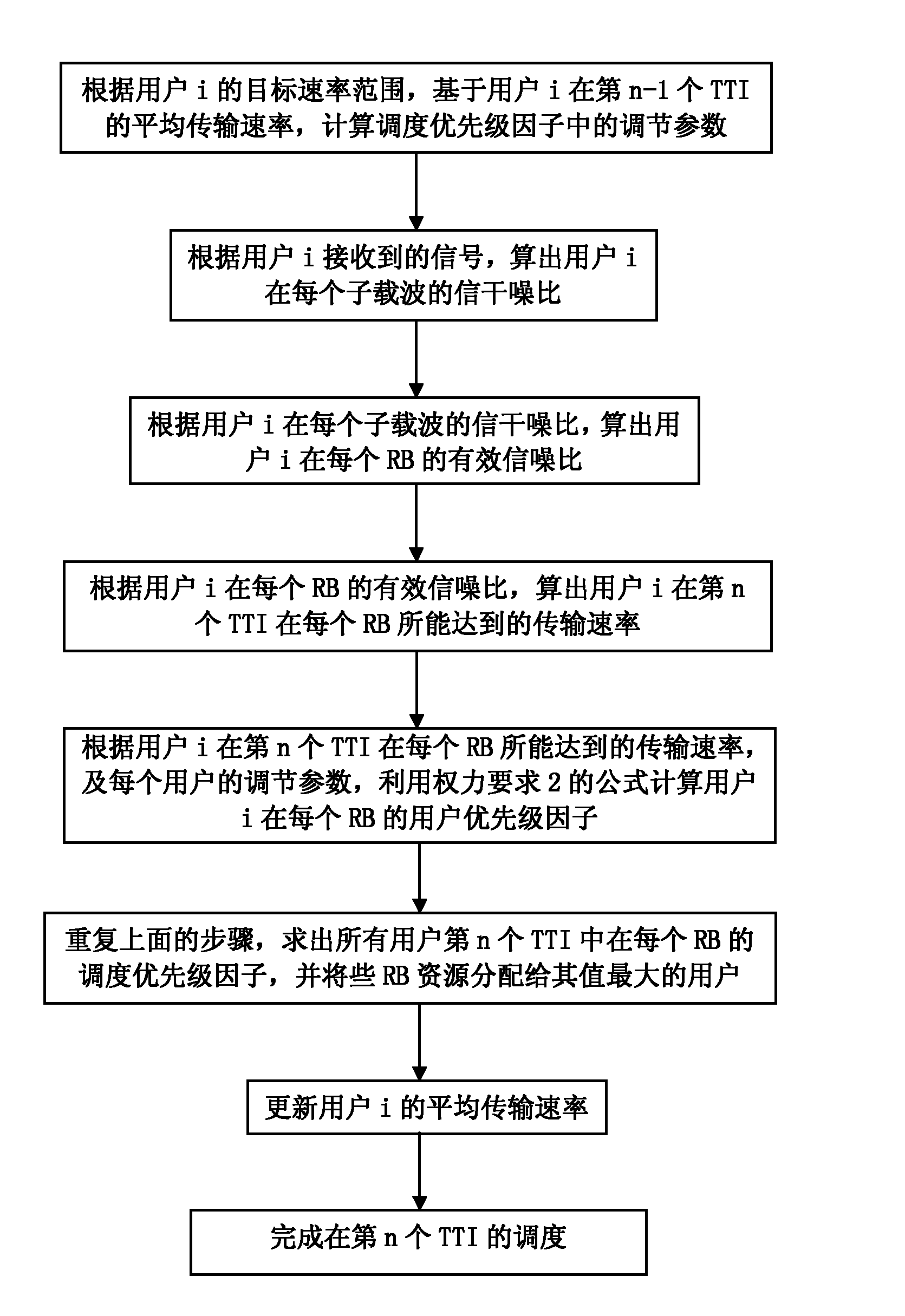Improved LTE (long term evolution) scheduling method based on proportional fair
A scheduling method and a technology of proportional fairness, applied in the field of LTE scheduling, can solve problems such as inability to guarantee system fairness, incompatibility of mixed services, failure to meet user minimum rate requests for high-speed and low-speed service fairness, etc.
- Summary
- Abstract
- Description
- Claims
- Application Information
AI Technical Summary
Problems solved by technology
Method used
Image
Examples
Embodiment Construction
[0036] The implementation of the present invention will be further described below in conjunction with the accompanying drawings, but the implementation and protection scope of the present invention are not limited thereto.
[0037] On the fixed total bandwidth B of the system, one user equipment (UE) is connected to the packet scheduler, and the total system bandwidth B is divided into K resource blocks (RB) in the frequency domain. Data is usually divided into data blocks of duration T=1 (1 ms) subframes, or referred to as Transmission Time Intervals (TTIs). For the purpose of analyzing a suitable scheduling algorithm, it is assumed that the channel is stationary within the duration of each subframe, but varies between subframes.
[0038] Such as figure 1 , first, according to the target rate range of user i, based on the average transmission rate of user i in the n-1th TTI, calculate the weighting factor W in the scheduling priority factor i (n) and Q i (n):
[0039] ...
PUM
 Login to View More
Login to View More Abstract
Description
Claims
Application Information
 Login to View More
Login to View More - R&D
- Intellectual Property
- Life Sciences
- Materials
- Tech Scout
- Unparalleled Data Quality
- Higher Quality Content
- 60% Fewer Hallucinations
Browse by: Latest US Patents, China's latest patents, Technical Efficacy Thesaurus, Application Domain, Technology Topic, Popular Technical Reports.
© 2025 PatSnap. All rights reserved.Legal|Privacy policy|Modern Slavery Act Transparency Statement|Sitemap|About US| Contact US: help@patsnap.com



